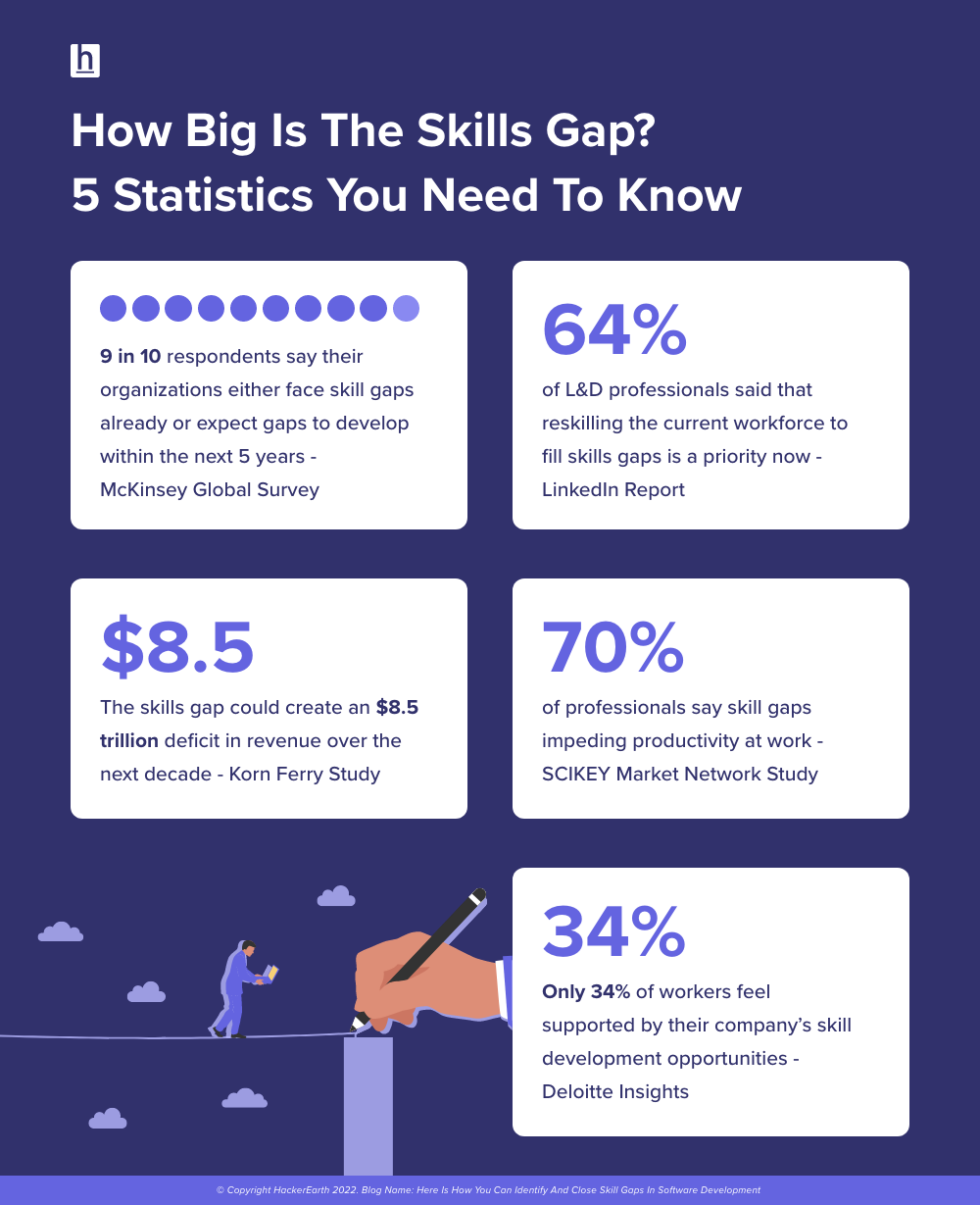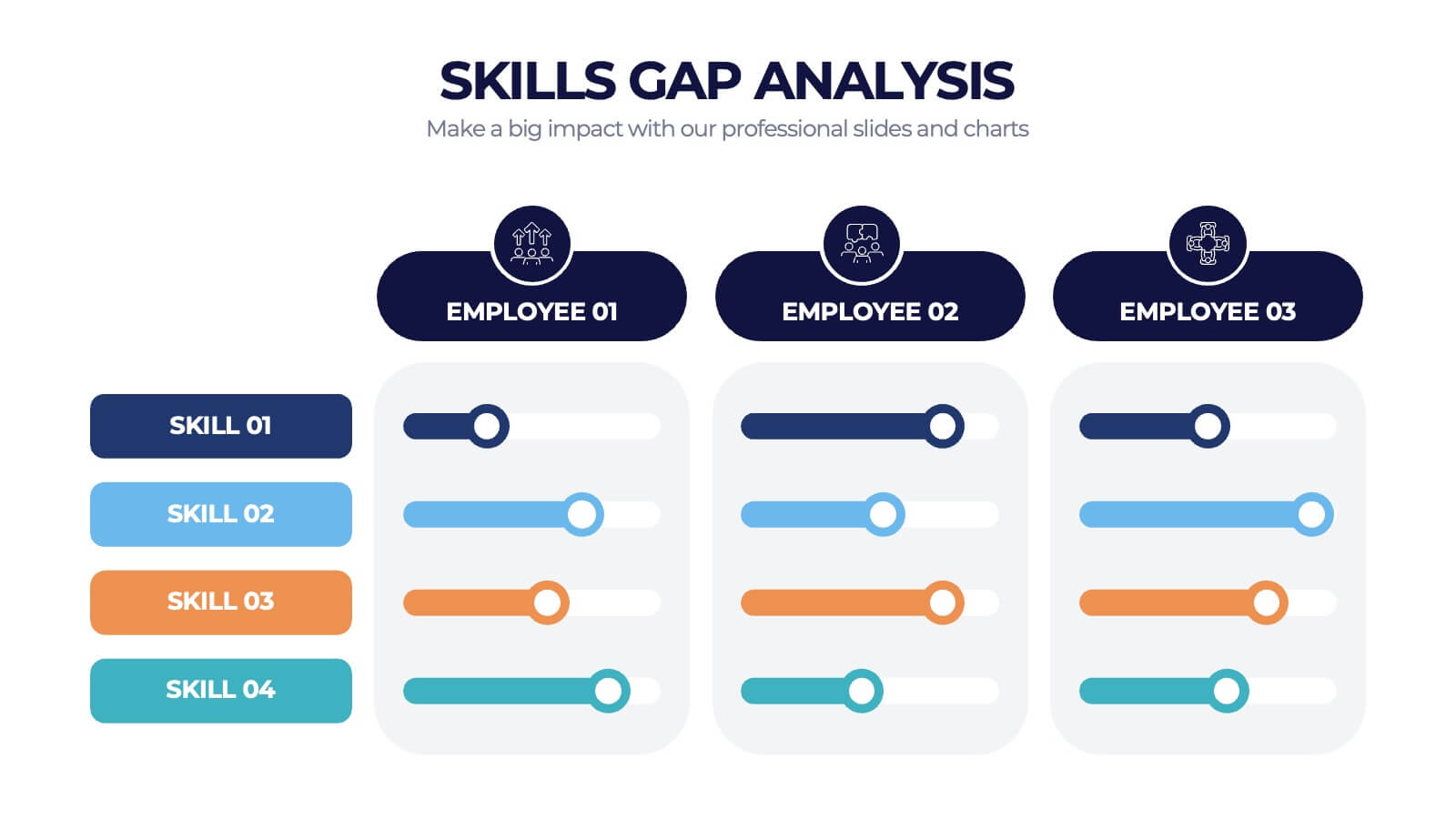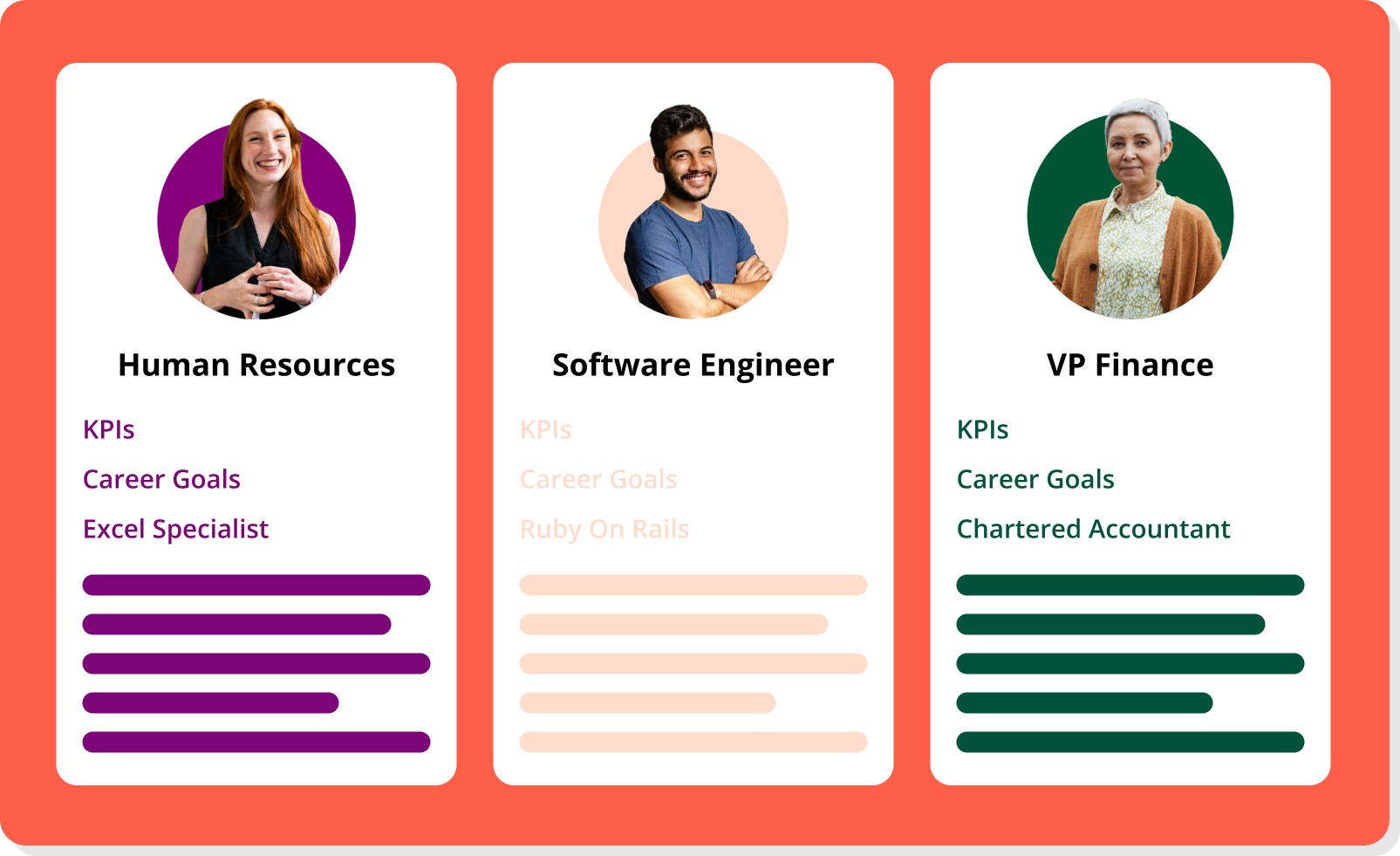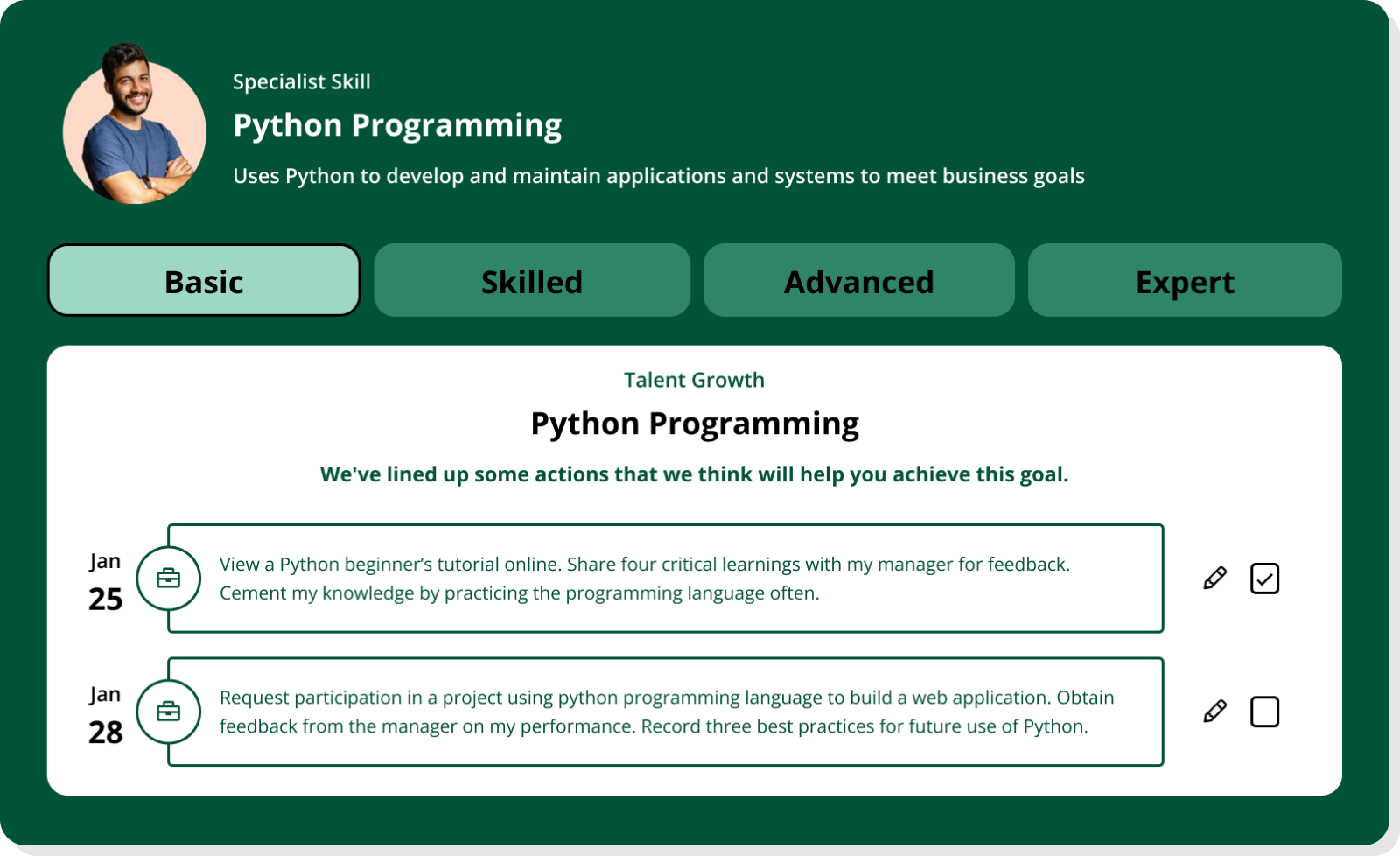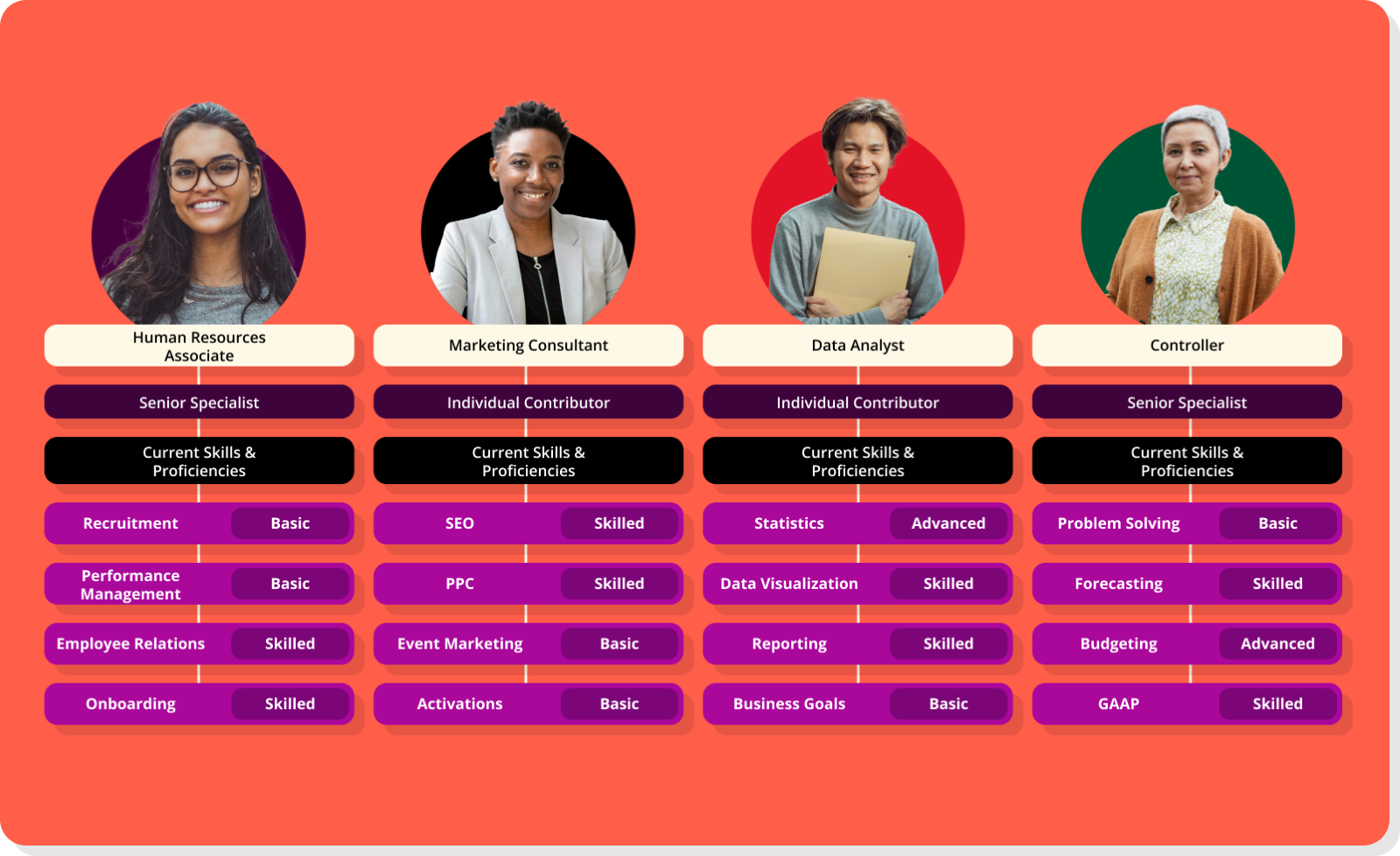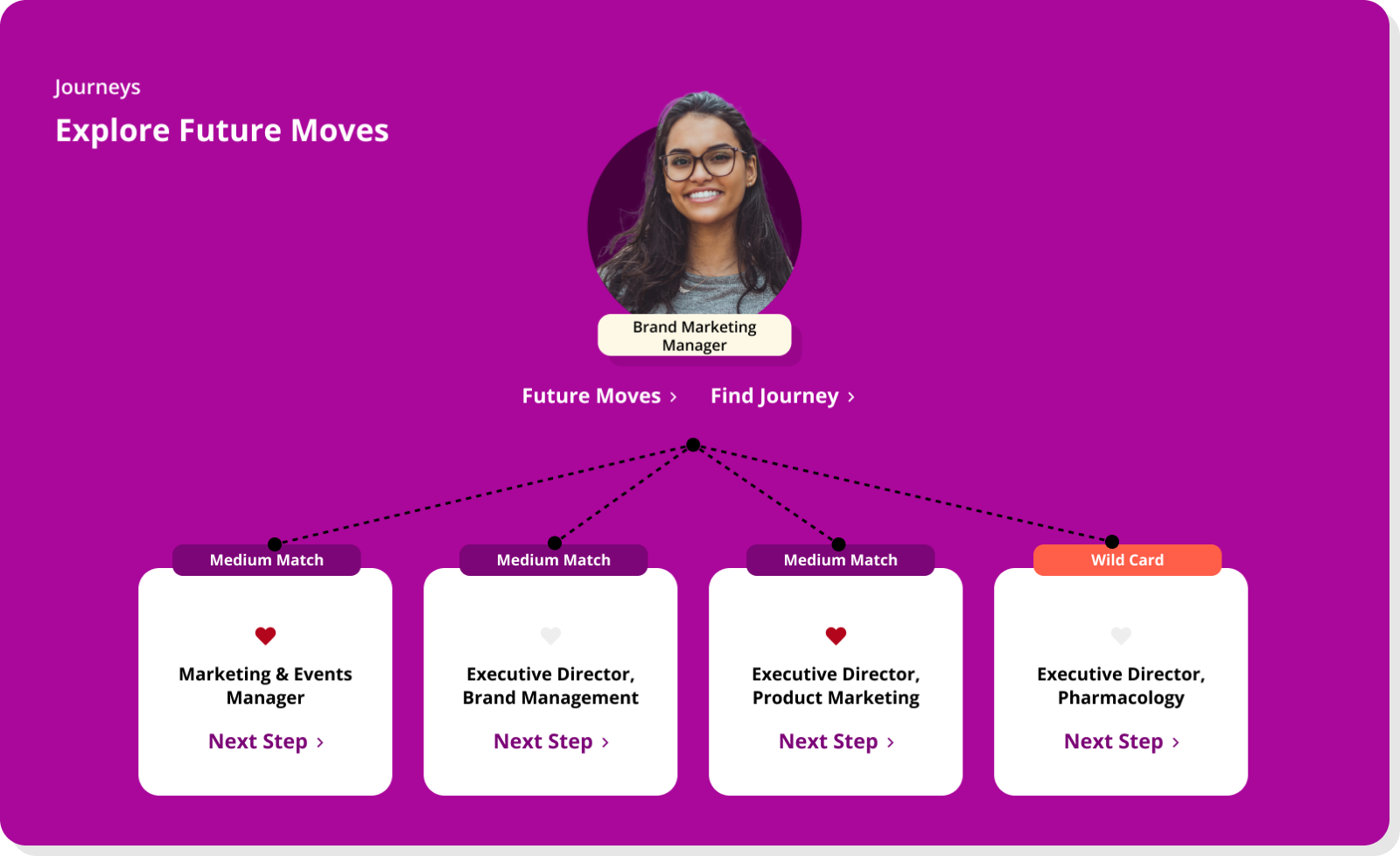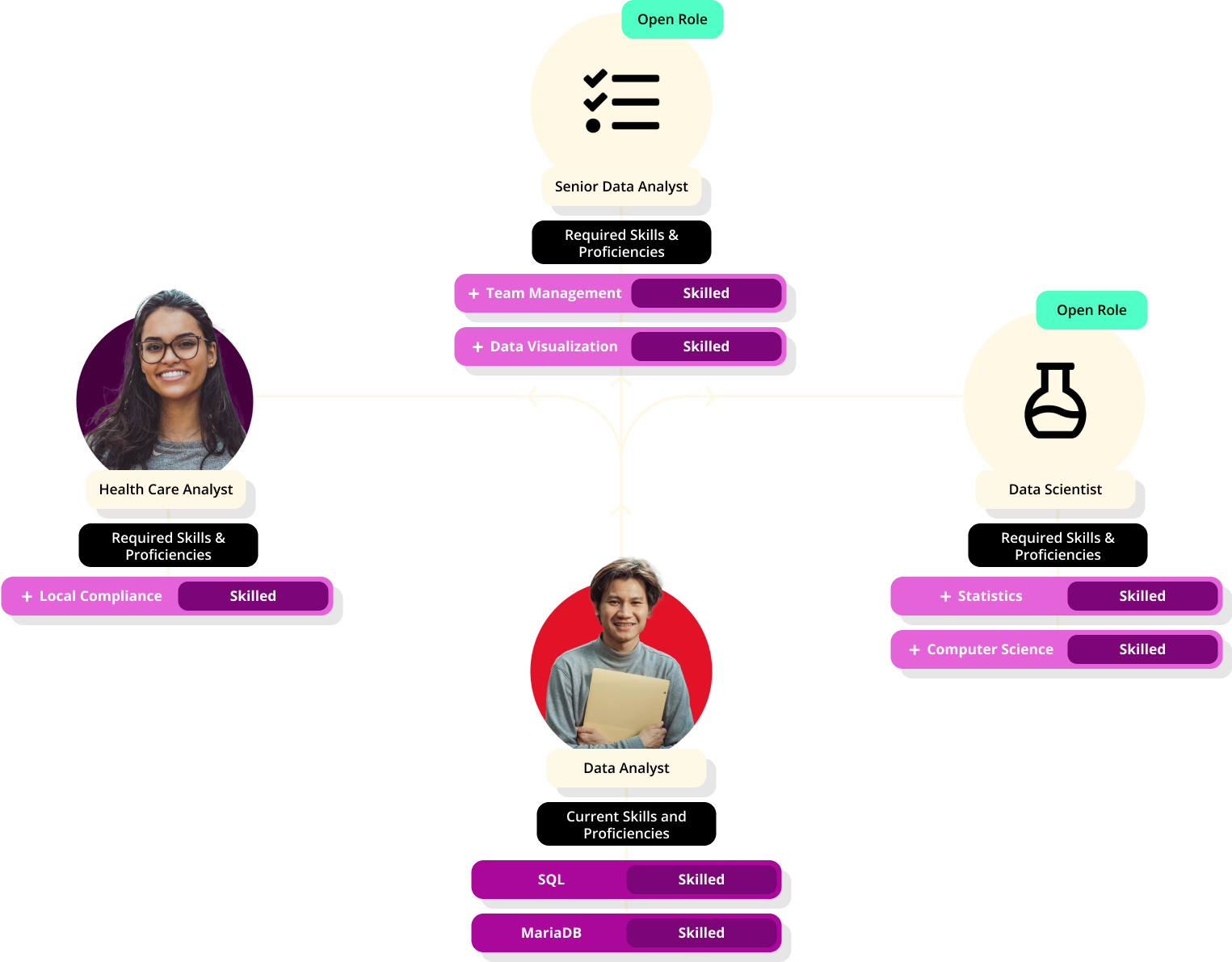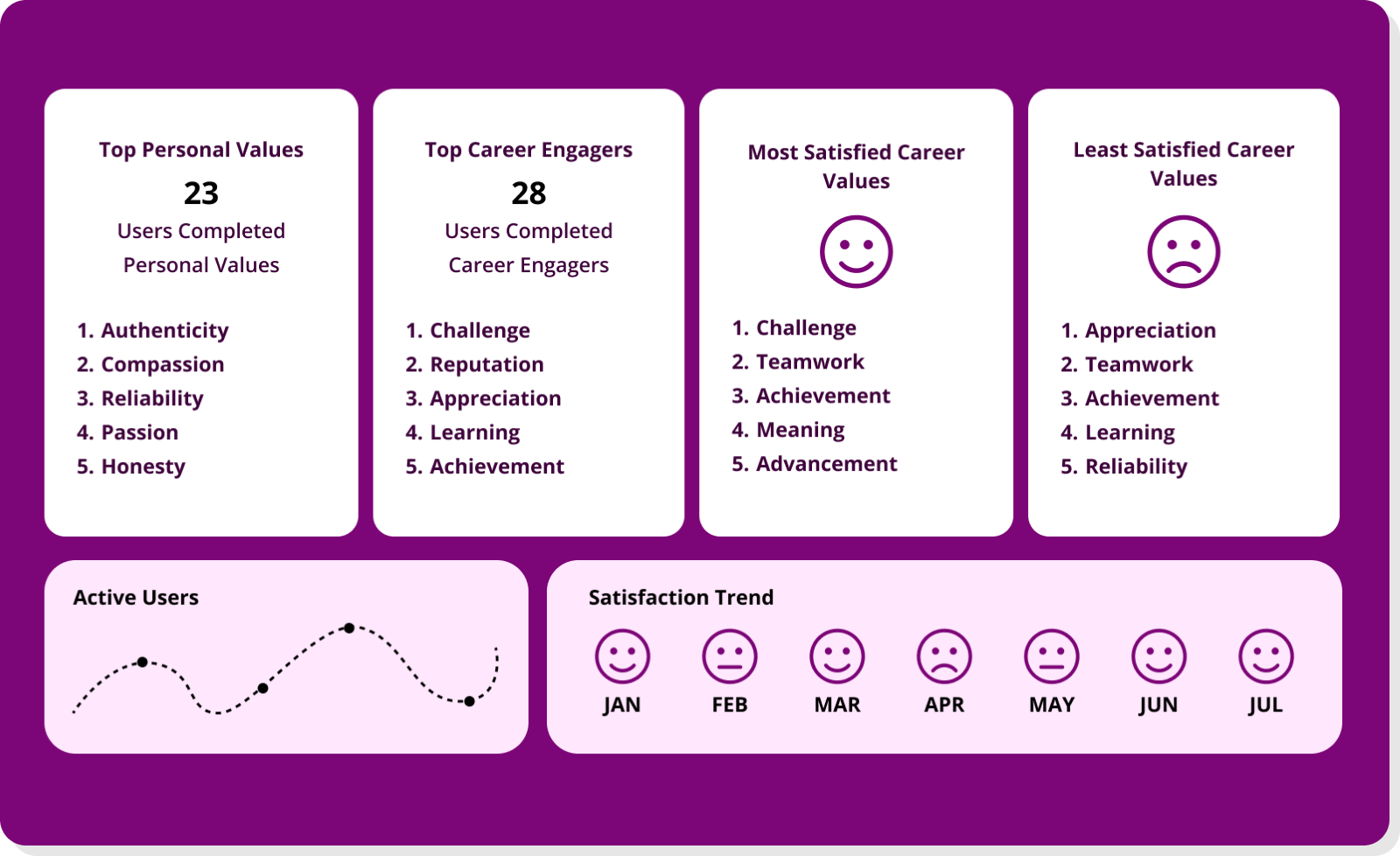Every CEO claims they can’t find good people. Every worker claims they can’t find good jobs. Both are right.
Welcome to the skills gap paradox.
The disconnect lies in how fast workplace skills are evolving. The capabilities companies desperately need today are often different from the skills their workforce has mastered. Skills gaps are caused by factors like changes in job roles, lack of qualified candidates, and an educational system that doesn’t keep pace with the evolving economy.
And by the time organizations adapt their training programs, the required skills have already shifted again.
This article examines what skills gaps really mean for today’s organizations, what causes them, and most importantly, how to address them effectively.
What is a skills gap?
At its core, a skills gap is the divide between what your organization needs to succeed and what your workforce can actually do. Evaluating the actual skills of your employees is crucial in understanding this divide. But this definition masks a deeper truth: skills gaps are often invisible until they’re hurting you.
Today’s skills gaps manifest in three critical ways:
- Immediate capability gaps: Your team lacks skills needed right now. Think data scientists who can’t work with large language models, or product managers who don’t understand API architectures.
- Emerging skills deficits: Skills your organization will need soon but hasn’t started developing. Like the marketing team that hasn’t developed AI capabilities while competitors are already deploying AI-driven campaigns.
- Strategic competency misalignment: The widening disconnect between your organization’s current collective capabilities and where your industry is heading.
Imagine trying to cross a canyon that gets one foot wider every time you take a step back to get a running start. That’s what organizations face with skills gaps today.
The data backs this up. When 53% of employees would forego a 10% pay raise just to gain new skills, you know something is broken in how we think about workforce capabilities. The skills that matter most today probably didn’t exist three years ago. And the ones you’re frantically trying to hire for now might be irrelevant next year. Frequent surveys indicate that a significant portion of organizations experience skills gaps, with some reporting up to 69% of companies affected.
Source: hackerearth
This isn’t a training issue. It’s not a hiring issue. It’s an existential threat to how organizations operate.
Want proof? Look at your own organization. How many roles are you trying to fill right now with a job description that would have seemed like science fiction five years ago? How many of your star performers are quietly becoming obsolete?
What causes skills gaps?
Most organizations believe skills gaps happen to them. The reality is more complex: skills gaps emerge from how organizations evolve and adapt to change. HR leaders report that skills gaps have become a more pressing issue due to rapid technological advancements and changing market demands.
Here’s why:
First, there’s the velocity challenge. Technology isn’t just changing; it’s changing faster than our traditional ways of learning and adapting. When AI capabilities double every 3-4 months, even the most adaptable teams need new approaches to learning and development.
Second, there’s organizational adaptation. Companies recognize the need for new skills, but transforming established practices takes time:
- Evolving hiring practices to value learning capacity alongside experience
- Developing promotion criteria that recognize adaptability and potential
- Creating learning programs that anticipate future needs
But perhaps the most significant factor is how organizations approach talent development.
It manifests in several ways:
- Prioritizing external hiring over internal talent development
- Focusing on immediate skill needs rather than building learning capabilities
- Viewing skills development as a cost rather than a strategic investment
- Limiting talent mobility between departments and roles
Then there are the structural challenges:
- Workforce planning approaches: Traditional workforce planning often struggles to keep pace with rapidly evolving skill requirements. By the time organizations identify and address skills needs, those needs have evolved.
- Leadership priorities: When organizations focus primarily on short-term performance metrics, it becomes challenging to invest in long-term skills development.
- Learning models: Conventional training programs – annual workshops, online courses, certification programs – often move too slowly for today’s pace of change.
- Skills visibility: Organizations often lack real-time insight into their workforce’s capabilities, making it difficult to identify and address emerging skills needs proactively. Many industries, such as healthcare and manufacturing, have more job openings than qualified candidates available to fill them.
The result is a continuous cycle where organizations find themselves adapting to yesterday’s skills needs while tomorrow’s requirements continue to evolve.
The good news? Understanding these causes is the first step toward creating more effective solutions.
Organizations that recognize these patterns can begin to build more adaptive, forward-looking approaches to skills development.
How do you conduct a skills gap analysis in the workplace?
Identifying skills gaps requires two things: data and context to uncover the full story. But most organizations make the mistake of relying on a single lens; either pure data or pure observation; when what’s needed is a more holistic approach. A skills gap analysis is a process that helps organizations identify and fill existing skills gaps among employees.
It is crucial to recognize that skills gaps exist and need to be identified through a comprehensive analysis.
Source: Slidenest
Start with business strategy
The most effective skills gap analysis begins with clear strategic context. Before diving into assessments and data, you need to understand what capabilities actually matter for your organization’s success. This means mapping your current and future business goals against your workforce capabilities.
For instance, when a retail business sees e-commerce trends reshaping their industry, they need to assess whether their teams have the digital capabilities to compete. When a software company spots AI transforming their market, they need to understand if their engineers can adapt.
The key is connecting strategic directives to specific capability requirements, identifying and prioritizing critical skills needed for organizational success.
Create a skills inventory
Once you have strategic context, the next step is creating a clear picture of your current workforce capabilities.
Modern skills assessment platforms can help map both technical and human skills across your organization, along with proficiency levels and skill adjacencies.
But technology alone isn’t enough. The most effective skills inventories combine data with human insight, manager observations, project outcomes, and employee self-assessments.
This multi-dimensional view helps uncover not just what skills exist, but how effectively they’re being applied.
Look for operational signals
Skills gaps often reveal themselves through operational pain points long before they show up in formal assessments.
When projects consistently fall behind schedule, when quality issues persist, or when teams struggle to adopt new technologies – these are often early warning signs of underlying skills gaps.
The key is distinguishing between skills gaps and other operational issues. A project delay might stem from poor planning rather than missing capabilities. Quality issues could indicate process problems rather than skill deficits. This is where context becomes crucial.
Consider multiple perspectives
No single source of insight is sufficient for understanding skills gaps. Smart organizations triangulate data from multiple perspectives:
- Employee self-assessments reveal perceived gaps and development interests
- Manager evaluations provide performance context
- Project outcomes show skills in action
- Customer feedback highlights capability impacts
- Industry benchmarks provide external context
Focus on future requirements
Perhaps most importantly, effective skills gap identification looks forward, not just at present needs. This means monitoring industry trends, tracking competitor capabilities, and analyzing emerging skill requirements in your sector.
The goal isn’t just documenting current gaps – it’s anticipating future ones. This forward-looking approach helps organizations move from reactive to proactive skills development.
Rather than constantly playing catch-up, they can begin building capabilities before they become critical needs.
Remember: Skills gaps aren’t static targets; they’re moving and evolving constantly. The most effective identification approaches become part of your ongoing organizational rhythm, not one-time exercises.
They inform not just training plans, but hiring strategies, project staffing, and strategic planning.
5 practical ways to start closing skills gaps today
You’ll ultimately need technology and talent intelligence platforms to properly address skills gaps at scale. But transformation takes time, and skills gaps need attention now. Organizations can close skills gaps through strategies such as training existing staff or hiring new employees with the required skills.
While you work on your longer-term technology strategy, here are five approaches that your HR teams can implement immediately to start making progress:
Leverage your hidden talent through internal mobility
Your organization likely has more talent than you realize, it’s just trapped in departmental silos. Create simple processes that allow employees to take on projects outside their usual roles.
This could be as straightforward as a monthly email highlighting cross-departmental opportunities or a simple spreadsheet tracking internal project needs.
This approach serves two purposes: it helps develop new skills through hands-on experience and reveals hidden capabilities that already exist within your workforce.
When a marketing team member helps with a sales project, they not only develop new skills but might also demonstrate previously unknown talents.
Build learning into daily work
Rather than relying solely on formal training programs, integrate learning into regular work activities.
Encourage teams to spend the last 15 minutes of project meetings discussing what they learned and what skills they need to develop next. Make skill-sharing a regular part of team meetings, where employees can teach their colleagues about their areas of expertise.
The key is making learning continuous and contextual rather than separate from daily work. This creates a culture of constant skill development without requiring significant additional resources.
Create skill-sharing networks
Establish informal mentoring and knowledge-sharing connections across your organization. Identify your subject matter experts and create opportunities for them to share their knowledge.
Leveraging skilled employees for knowledge sharing is crucial, as their expertise can help bridge skills gaps and maintain productivity.
This could be through lunch-and-learn sessions, internal newsletters highlighting employee expertise, or simple mentor-mentee pairings.
The beauty of this approach is that it leverages existing expertise while building connections across your organization. It costs nothing but time and can significantly accelerate skill development.
Make skills visible
Create simple ways for employees to showcase their skills and interests. This could be through internal profile pages, team introductions that go beyond job titles, or regular skills showcases where employees can present their capabilities and learning goals.
When skills become visible, opportunities for development naturally emerge. A manager looking for specific capabilities might discover them in unexpected places within the organization.
Reframe job roles around skills
Start shifting how you think about roles and responsibilities. Instead of rigid job descriptions, create flexible role frameworks that emphasize the skills needed for success.
When posting internal opportunities, list required skills rather than years of experience or specific qualifications.
This shift in mindset helps organizations become more adaptable while giving employees clearer pathways for development. It also makes it easier to identify and address skills gaps as they emerge.
The goal isn’t to solve your skills gaps overnight – it’s to create an environment where continuous skill development becomes part of your organizational DNA.
These approaches may seem simple, but they lay the groundwork for more sophisticated talent development strategies.
Remember: The most effective skills strategies start with small, practical steps that gradually transform how your organization thinks about and develops talent.
How to address skills gaps using Fuel50’s talent intelligence platform?
Traditional approaches to skills gaps often fail because they treat skills as static data points rather than dynamic capabilities. This misses the fundamental reality of today’s workplace: skills aren’t just things people have; they’re living, evolving assets that need to be continuously developed and deployed.
Fuel50’s integrated talent marketplace and skills intelligence platform takes a fundamentally different approach.
Instead of simply tracking skills, it creates an ecosystem where skills become the currency of opportunity and growth.
Create a dynamic skills inventory with expert-driven skills ontology
The foundation of effective skills management isn’t just having a skills database –– it’s having the right skills framework that evolves with your organization. Most companies struggle with either overly simplistic taxonomies that miss crucial nuances or bloated frameworks that become impossible to maintain.
Fuel50’s Skills Ontology solves this by providing a carefully curated library of thousands of skills, capabilities, and competencies. But what makes this truly powerful isn’t just the number – it’s the intelligence built into each skill definition.
Every capability comes with clear proficiency levels and development actions, designed by I/O psychologists to eliminate bias and ensure consistent application across your organization.
This expert-driven approach means organizations can finally move beyond the chaos of self-reported skills to a structured framework that drives meaningful development.
Map your organization’s skills landscape with talent blueprint
Understanding your organization’s skills landscape is about creating a living map of capabilities that informs every talent decision. Fuel50’s Talent Blueprint transforms how organizations visualize and manage their skills architecture.
Instead of relying on outdated job descriptions and organizational charts, Talent Blueprint creates a dynamic view of your workforce capabilities. It automatically maps skills to roles, identifies critical gaps, and reveals unexpected skill clusters that could drive innovation.
Most importantly, it helps predict future skill needs based on market trends and your organization’s strategic direction.
Think of it as your organization’s skills GPS; constantly updating to show where you are, where you need to go, and the most effective paths to get there.
Enable proactive skills development through career journeys
The most effective way to address skills gaps is to create an environment where continuous skill development is built into every career path. Fuel50’s career pathing tools transform how employees navigate their development journey.
Rather than presenting generic career ladders, the platform creates personalized development paths that align individual aspirations with organizational needs.
It suggests relevant opportunities –– from learning resources to stretch projects –– that help build critical capabilities before they become urgent needs.
This proactive approach means organizations can stay ahead of emerging skills requirements while keeping employees engaged in meaningful growth.
Drive skills acquisition through internal mobility
Knowledge may be power, but application is everything. Fuel50’s talent marketplace transforms skills development from a theoretical exercise into practical action. It creates a dynamic internal opportunity marketplace where skills become the currency of growth.
The platform intelligently matches employees to opportunities based not just on their current capabilities, but on their potential and aspirations.
This could mean connecting them to short-term projects that build new skills, mentoring relationships that transfer knowledge, or new roles that leverage their capabilities in unexpected ways.
The result? A more fluid, adaptable organization where skills flow to where they’re needed most.
Gain actionable insights with workforce analytics
In the end, you can’t manage what you can’t measure. Fuel50’s analytics capabilities provide the insights organizations need to move from reactive to proactive skills management.
Leaders can track skill development trends, identify emerging gaps, and measure the impact of development initiatives.
Most importantly, these insights enable strategic workforce planning that goes beyond headcount to focus on capabilities. Organizations can finally answer crucial questions like:
- Where are our critical skill gaps emerging?
- How effectively are we developing key capabilities?
- Where should we focus our learning investments?
- Which skills will drive our future success?
The result isn’t just better skills management. It’s a fundamental transformation in how organizations develop and deploy talent.
Companies using Fuel50 typically see dramatic improvements in key metrics, including 60% reductions in attrition and significant increases in internal mobility rates.



